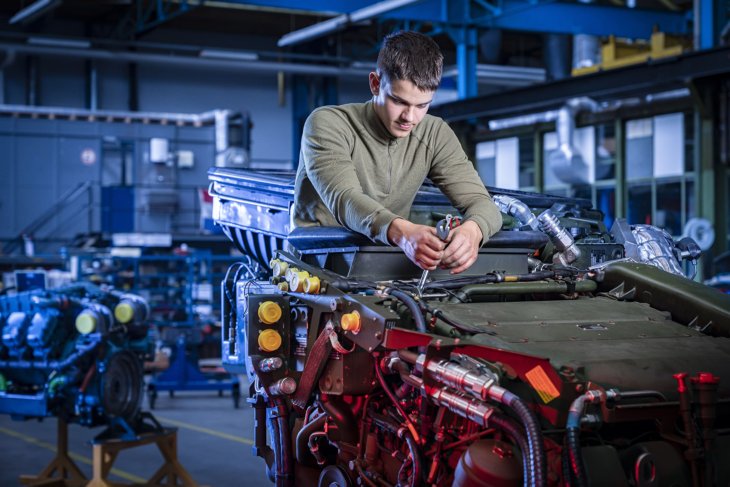Prof. Tiedo Tinga leads a research programme on smart maintenance at the Netherlands Defence Academy in Den Helder, which is also his main field of research at the University of Twente. He explains why a collaboration between the university and the Ministry is valuable: “The Ministry gains access to research into smart maintenance, asset management, logistics, and data science, among others. At the same time, we carry what we learn through this collaboration in our research and work with industry.”
Just-in-time maintenance
With increases in defence budgets, there is now more room to invest in long-term research. One such area is smart maintenance, which is estimated to reduce the planned and unplanned downtime of systems by 20-30%.
Traditionally, maintenance is scheduled at fixed intervals, regardless of whether a system needs it. This often leads to unnecessary replacements — or costly, unexpected breakdowns. For example, when a ship is stranded at sea due to an engine failure, it requires towing and logistical support in addition to the repair costs.
“What my research group does,” Tinga explains, “is to understand why a system fails and the physics behind that failure. If we understand that, we can predict when a failure will happen — and we can provide maintenance just before it occurs.” This technique, known as just-in-time maintenance, ensures that repairs are done when needed — neither too early nor too late. Whether it is the hull of a navy ship, the engine of an aircraft, or a wind turbine, the principles are the same: materials degrade, and the system fails. “Scientifically, it is all the same.”
Unpredictability
For military systems, smart maintenance is even more critical. “You don’t want a system failure during a mission — people's lives are at risk.” Just-in-time maintenance for military systems is more challenging due to unpredictable operating conditions. A ship sailing through the North Sea faces very different environmental stresses than one in the Persian Gulf. Besides, the effects of those conditions are not accounted for in a standard maintenance schedule.
“With a train, you know the routes and schedules months in advance, so the conditions are more predictable and constant,” Tinga says. “The variability is much bigger for military applications, which means we need more advanced maintenance policies.”
Condition monitoring and predictive modelling
To account for these unpredictable factors, Tinga’s research group uses condition monitoring and predictive modelling. Condition monitoring involves continuously measuring the condition of the system with sensors. For example, if a structural part is prone to cracking, a sensor measures the crack length over time. When the crack reaches a predefined threshold — for example, two centimetres — the system triggers maintenance.
In addition, numerical models can calculate damage progression over time and estimate the remaining lifespan of a component. The model can calculate how long it will take before a crack reaches a critical size. This way, repairs can be scheduled well in advance.
Hybrid approach
Despite the progress in just-in-time maintenance, there are still challenges. A ship, for example, is a complex system with various subsystems and components made from different materials. Building precise models for every part isn’t feasible.
Meanwhile, the abundance of available data presents another challenge: how to combine the data with existing knowledge of material degradation and failure. Machine learning and AI algorithms can help, but a fully data-driven approach is impractical.
Tinga explains: “To train a machine learning model to predict a system failure, you need many examples. But because we do maintenance to prevent failures, we rarely see them. I don't believe a fully data-driven approach will ever work in our field. We have too little data to train the models. A hybrid approach combining domain knowledge and physical laws about materials and degradation makes accurate predictions with far less data.”




